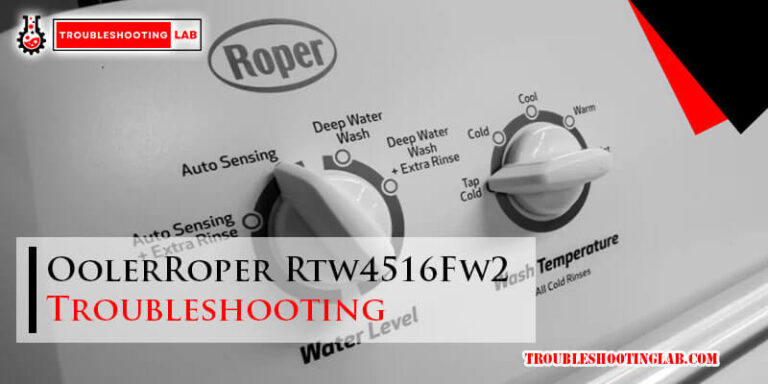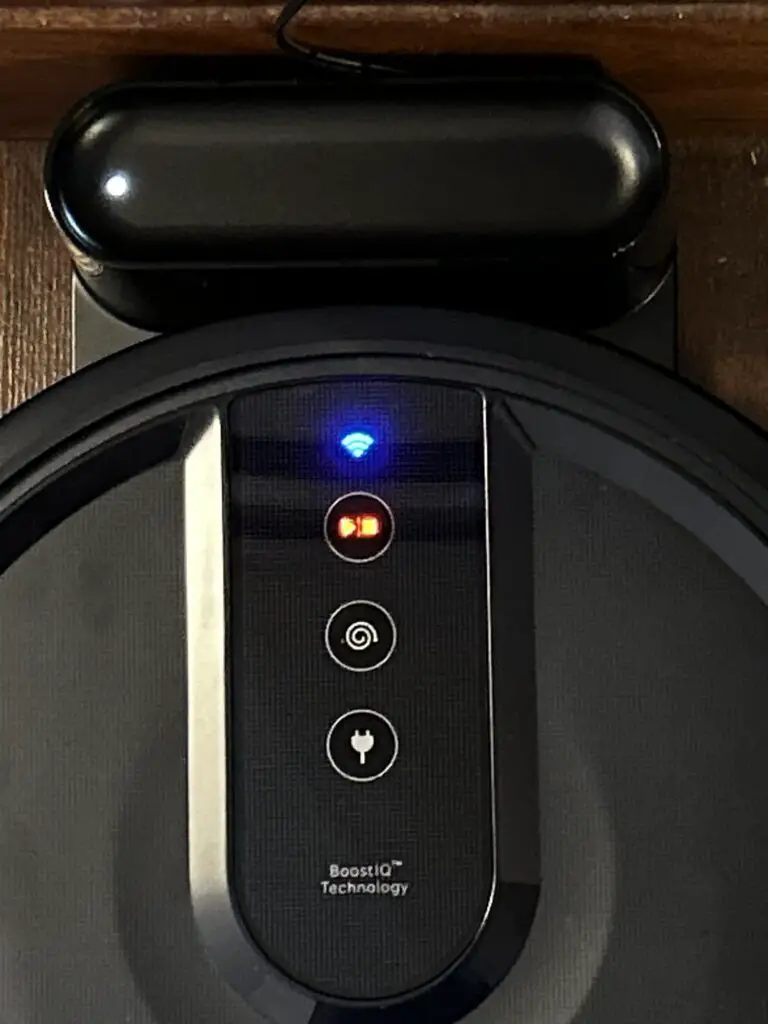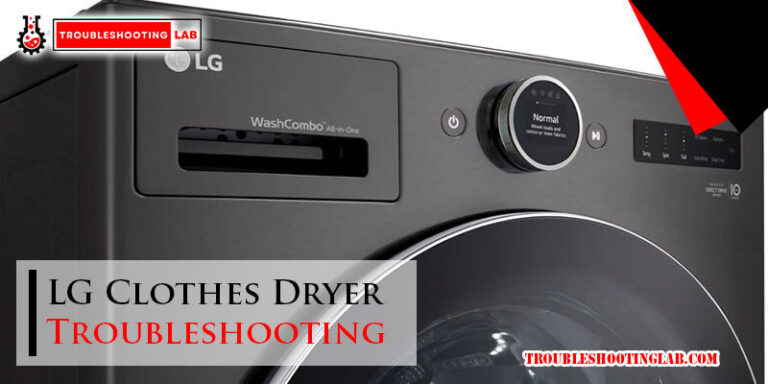Ge Profile Washer Troubleshooting: Quick Fixes & Tips
If you’re having issues with your GE Profile washer, troubleshooting can help identify and resolve the problem. GE Appliances offers troubleshooting support for washers and dryers to help you find the information you need.
Whether your washer won’t start, agitate, drain, or has other issues, understanding common problems and their solutions can help you get your washer back in working order. With the guidance and resources available, you can troubleshoot and address various issues to ensure your GE Profile washer functions smoothly.

Credit: www.reddit.com
Initial Steps Before Troubleshooting
Before troubleshooting your GE Profile washer, start by checking the selection dial, the lid for bulge or striker damage, and the water supply. Look for error codes and diagnostics in the tech sheet and inspect components under the washer. Additionally, test the shift assembly and review the fault code list for GE washing machines.
Before you start troubleshooting your GE Profile Washer, there are a few initial steps you should take. These steps will ensure your safety and help you gather the necessary tools for the job.
Safety First: Unplugging Your Washer
The first step before troubleshooting your GE Profile Washer is to unplug it from the power source. This will ensure your safety and prevent any electrical accidents. Make sure to turn off the water supply as well.
Gathering Necessary Tools
To troubleshoot your GE Profile Washer, you will need some basic tools such as a screwdriver, pliers, and a multimeter. You may also need a flashlight and a bucket to catch any water that may leak out during the troubleshooting process. Make sure to gather all the necessary tools before you begin troubleshooting.
Once you have completed these initial steps, you are ready to move on to troubleshooting your GE Profile Washer. Remember to follow the manufacturer’s instructions carefully and take all necessary safety precautions. By taking these initial steps, you can ensure a successful troubleshooting process and a fully functional washer.
Common Ge Profile Washer Issues
When troubleshooting your GE Profile washer, it’s essential to be aware of common issues that may arise. Below are some of the most frequently encountered problems:
Washer Won’t Start
If your GE Profile washer won’t start, check for a malfunctioning electronic control board or a jammed door lock assembly as these are common culprits.
Washer Won’t Drain
When your washer won’t drain, it could be due to a clogged drain hose or pump, or a faulty drain pump. Ensure these components are clear and functioning properly.
Vibrating Or Shaking Washer
A vibrating or shaking washer may indicate an unbalanced load, uneven flooring, or worn-out suspension rods. Try redistributing the load or leveling the washer to resolve this issue.
Slow Fill Or No Fill
If your GE Profile washer is filling slowly or not filling at all, check the water inlet valve, water supply hoses, and water pressure to ensure proper functioning and adequate water flow.
User Interface Problems
When it comes to Ge Profile washer troubleshooting, user interface problems can be a common issue that users encounter. These problems can range from unresponsive control panels to error messages on the display. Understanding how to diagnose and resolve user interface problems is crucial for ensuring the smooth operation of your washer.
Checking The Control Panel
If you encounter user interface problems with your Ge Profile washer, the first step is to check the control panel for any visible issues. Look for any signs of physical damage, such as cracks or worn-out buttons. Additionally, ensure that the control panel is properly connected to the washer’s internal components to rule out any loose connections.
Resetting The Washer Control Board
If the control panel appears to be functioning properly, but you are still experiencing user interface problems, resetting the washer control board can help resolve the issue. To reset the control board, start by unplugging the washer from the power source for a few minutes. Afterward, plug it back in and power it on to see if the user interface problems have been resolved.
Door Lock Mechanism Faults
The door lock mechanism is an essential component of your GE Profile washer, ensuring that the door remains securely closed during operation. When this mechanism encounters faults, it can lead to issues such as the washer not starting or stopping mid-cycle. Understanding the common problems associated with the door lock assembly and how to troubleshoot them can help you resolve issues efficiently.
Inspecting The Door Lock Assembly
Inspecting the door lock assembly is the first step in troubleshooting any potential faults. Start by visually examining the door lock for any signs of physical damage, such as cracks or misalignment. Additionally, check for any obstructions that may be preventing the door from locking properly. Ensure that the door is closing securely and that the lock engages without resistance.
Troubleshooting A Jammed Door Lock
If you suspect a jammed door lock to be the culprit behind your washer issues, there are steps you can take to troubleshoot this problem. Begin by carefully examining the door lock for any debris or foreign objects that may be obstructing its function. Use a flashlight to inspect the lock mechanism thoroughly, and remove any obstructions that may be present. Additionally, check the wiring connections to the door lock for any signs of damage or disconnection.
Water Supply And Drainage
When it comes to troubleshooting your GE Profile washer, addressing issues with the water supply and drainage is essential. Without proper water supply and drainage, your washer may not function effectively. Let’s look at some important steps to troubleshoot and resolve water supply and drainage issues.
Ensuring Proper Water Supply
To ensure your GE Profile washer has a consistent and adequate water supply, follow these steps:
- Check that the water faucets connected to the washer are fully turned on.
- Inspect the inlet hose for any kinks, leaks, or clogs.
- Verify that the water inlet valve screens are clean and free of debris.
- Confirm that the water pressure is within the recommended range for the washer to operate efficiently.
Clearing Drainage Obstructions
If your washer is experiencing drainage issues, it’s important to address any obstructions in the drainage system. Here’s what you can do:
- Check the drain hose for any kinks or clogs that may be obstructing the flow of water.
- Ensure that the drain hose is installed at the correct height and angle to facilitate proper drainage.
- Inspect the drain pump for any debris or foreign objects that may be impeding its function.
- Clean the lint trap or filter to prevent any blockages that could affect drainage.
Motor And Sensor Issues
When it comes to troubleshooting your GE Profile washer, motor and sensor issues can often be the culprits behind common problems such as the washer not agitating, draining slowly, or failing to start a cycle. Identifying and addressing motor and sensor issues is essential to ensure the smooth operation of your washing machine.
Testing The Motor Speed Sensor
If you suspect that the motor speed sensor in your GE Profile washer is malfunctioning, conducting a simple test can help diagnose the issue. Follow these steps to test the motor speed sensor:
- Unplug the washer from the power source.
- Locate the motor speed sensor, usually positioned near the motor.
- Using a multimeter, set it to the resistance measurement mode.
- Connect the multimeter to the sensor’s terminals and check for continuity.
- If the sensor does not show any resistance or continuity, it may need to be replaced.
Replacing Faulty Sensors
When dealing with faulty sensors in your GE Profile washer, timely replacement is crucial to restore the proper functioning of the appliance. Here are the steps to replace faulty sensors:
- Refer to the washer’s manual to identify the location of the sensors.
- Disconnect the power supply and water source to ensure safety.
- Remove the old sensor by carefully detaching the wiring and unscrewing it from its position.
- Install the new sensor by securing it in place and reconnecting the wiring.
- Restore power and test the washer to ensure the issue is resolved.
Internal Component Inspections
Accessing And Assessing Internal Parts
When troubleshooting your GE Profile washer, it’s essential to inspect internal components thoroughly.
- Start by accessing the internal parts of the washer.
- Inspect each component carefully for any signs of wear or damage.
- Look for loose connections or broken pieces that may be causing issues.
Belt And Pulley Maintenance
Proper maintenance of belts and pulleys is crucial for the optimal performance of your washer.
- Regularly check the condition of the belts for any signs of wear or stretching.
- Inspect the pulleys to ensure they are aligned correctly and free from debris.
- Replace any worn-out belts and lubricate pulleys as needed to prevent malfunctions.
Understanding Error Codes
To troubleshoot your GE Profile washer and understand error codes, you can follow simple steps such as checking the selection dial, lid, and water supply. Additionally, you can find the tech sheet for error codes and diagnostics to identify and resolve potential issues affecting the washer’s performance.
Entering Diagnostics Mode
If you’re experiencing issues with your GE Profile washer, entering diagnostics mode can help you identify the problem. To enter diagnostics mode, start by unplugging the washer for at least 30 seconds. Then, plug it back in and press the “Power” button to turn it on. Next, press and hold the “Delay Start” and “Delay End” buttons at the same time for three seconds. Finally, press the “Start/Pause” button to enter diagnostics mode.
Deciphering The Fault Code List
Once you’re in diagnostics mode, you can decipher the fault code list to determine what’s causing your washer to malfunction. The fault code list is a series of letters and numbers that indicate specific issues with your washer. You can find the fault code list in your washer’s user manual or online. Once you’ve identified the fault code, you can take steps to fix the problem or contact a professional for assistance.
Some common fault codes that you may encounter include:
- E01 – Door lock error
- E02 – Water temperature sensor error
- E03 – Pressure sensor error
- E04 – Overflow error
- E05 – Unbalanced load error
If you’re unsure of what a particular fault code means, consult your user manual or contact a professional for assistance.
Understanding error codes is essential for troubleshooting your GE Profile washer. By entering diagnostics mode and deciphering the fault code list, you can identify the problem and take steps to fix it. Whether you’re dealing with a door lock error or an unbalanced load error, knowing how to decipher the fault code list can help you get your washer back up and running in no time.
Advanced Fixes And Replacements
When troubleshooting your GE Profile washer, you may encounter issues that require more advanced fixes and replacements. In this section, we will discuss how to handle electronic control board issues and when it’s time to consider professional repair.
Handling Electronic Control Board Issues
- Ensure the washer is unplugged before proceeding.
- Inspect the control board for any visible damage or loose connections.
- Reset the control board by unplugging the washer for a few minutes.
- If the issue persists, consider replacing the electronic control board.
When To Consider Professional Repair
- If you are unsure about diagnosing the problem accurately.
- When dealing with complex electrical components.
- If the issue requires specialized tools or expertise.
- When the cost of replacement parts exceeds the value of the washer.
Maintenance Tips To Prevent Future Issues
Proper maintenance is essential to keep your GE Profile washer running smoothly. By following these maintenance tips, you can prevent future issues and extend the lifespan of your appliance.
Routine Cleaning Recommendations
- Clean the detergent dispenser: Regularly remove and clean the detergent dispenser to prevent clogs and mold buildup.
- Wipe the door seal: Use a damp cloth to clean the door seal and remove any debris or residue.
- Run a cleaning cycle: Periodically run a cleaning cycle with vinegar or a washing machine cleaner to eliminate odors and residue.
Regular Inspection And Care
- Check for leaks: Inspect hoses and connections for any signs of leakage and replace them if necessary.
- Examine the drum: Look for any foreign objects or debris in the drum that could cause damage during the wash cycle.
- Inspect the door latch: Ensure the door latch is secure and functioning properly to avoid issues with the door not closing or locking.
Frequently Asked Questions
How Do You Do A Hard Reset On A Ge Washer?
To hard reset a GE washer, unplug it for one minute, then plug it back in.
What Are Common Problems With Ge Washers?
Common problems with GE washers include failure to agitate, not draining, excessive vibration, slow or no filling.
How Do I Reset My Ge Washer Control Board?
To reset your GE washer control board, unplug the washer from the electrical outlet for at least one minute. After one minute, plug the washer back in and open and close the door six times within 12 seconds to reset the control board.
This should clear any errors and reset the washer.
Why Won’t My Ge Washer Start A Cycle?
To troubleshoot a GE washer that won’t start a cycle, check the electronic control board, door lock assembly, and user interface for issues.
Conclusion
Troubleshooting your GE Profile washer can be done efficiently with the right steps. By checking error codes, inspecting components, and following diagnostic procedures, you can identify and fix common issues. Remember to refer to resources for further assistance and ensure a smooth washing machine operation.






